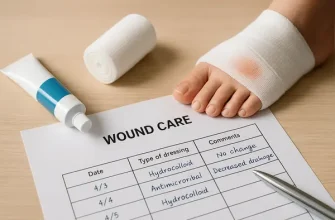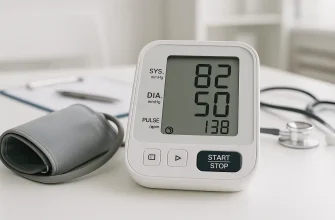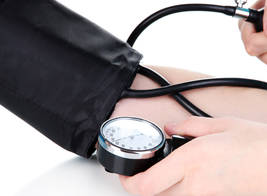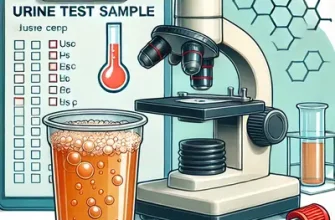Blood pressure (BP) measurement is one of the most frequent and fundamental tasks performed by nurses in daily practice. Despite being routine, even small inaccuracies can directly impact diagnosis, medication adjustments, and long-term patient outcomes. This article provides nurses with a clear, evidence-based protocol for measuring blood pressure correctly, highlights common mistakes to avoid, and emphasizes the nursing role in ensuring accuracy and patient safety.
Understanding Blood Pressure Basics
Blood pressure is expressed as two numbers:
- Systolic pressure: pressure when the heart contracts
- Diastolic pressure: pressure when the heart relaxes
Normal adult blood pressure is considered less than 120/80 mmHg (millimeters of mercury), which corresponds to approximately 16/10.6 kPa (kilopascals). Hypertension is generally defined in the U.S. as readings ≥130/80 mmHg (17.3/10.6 kPa) according to the American Heart Association.
💡 Common Pitfalls: Nurses may assume patients know “normal ranges,” but many don’t. Always clarify what the numbers mean and why accuracy is critical.
✅ Good Practice: When explaining results, compare readings to both normal and high BP categories so the patient understands the context.
Step-by-Step Nursing Protocol for Measuring Blood Pressure
1. Patient Preparation
- Ensure the patient rests at least 5 minutes before measurement.
- Seat patient with back supported, feet flat (not crossed), and arm supported at heart level.
- Ask patient to avoid caffeine, smoking, or exercise 30 minutes prior.
💡 Frequent Error: Rushing into the measurement without resting time.
✅ Good Practice: Set a timer for 5 minutes of rest before taking the reading.
2. Equipment Selection
- Choose an appropriately sized cuff:
- Small adult cuff: 7–9 in (18–22 cm) arm circumference
- Regular adult cuff: 9–13 in (23–33 cm)
- Large adult cuff: 13–17 in (34–44 cm)
- Extra-large cuff: 17–20 in (45–52 cm)
💡 Frequent Error: Grabbing the nearest cuff without checking fit.
✅ Good Practice: Use the printed guide on most cuffs to quickly match size to arm circumference.
3. Measurement Technique
- Place cuff on bare arm, 1 in (2.5 cm) above the elbow crease.
- Use the brachial artery for auscultation when measuring manually.
- Inflate cuff to 20–30 mmHg above expected systolic.
- Deflate at 2–3 mmHg per second.
- Record systolic (first Korotkoff sound) and diastolic (disappearance of Korotkoff sounds).
💡 Frequent Error: Deflating too quickly, which causes missed readings.
✅ Good Practice: Watch the manometer and count seconds to maintain a steady 2–3 mmHg deflation rate.
4. Repeat if Necessary
- If results are unusual, repeat after 1–2 minutes.
- Take measurements in both arms initially; use the arm with the higher reading for future monitoring.
💡 How to Check Yourself: If two readings differ by more than 10 mmHg, redo the procedure with careful technique.
Table: Arm Size and Cuff Selection
| Arm Circumference | Cuff Size | Width (in/cm) | Bladder Length (in/cm) |
|---|---|---|---|
| 7–9 in (18–22 cm) | Small Adult | 4 in (10 cm) | 8 in (20 cm) |
| 9–13 in (23–33 cm) | Adult | 5 in (13 cm) | 10 in (26 cm) |
| 13–17 in (34–44 cm) | Large Adult | 6 in (16 cm) | 12 in (32 cm) |
| 17–20 in (45–52 cm) | XL Adult | 7 in (18 cm) | 14 in (35 cm) |
Common Errors and How to Avoid Them
Mistakes during BP measurement can lead to false readings. The most common include:
- Using the wrong cuff size: too small raises readings by 10–15 mmHg; too large lowers them.
- Patient talking during measurement: can raise systolic by 10 mmHg.
- Crossed legs: increases systolic by 2–8 mmHg.
- Arm unsupported or below heart level: can alter results by 5–10 mmHg.
Case Example (U.S.): A 52-year-old man in Texas repeatedly showed high BP readings at his clinic. Review revealed that his arm was unsupported during measurements. Correcting technique lowered his readings by 12 mmHg.
💡 How to Recognize an Error: If the reading seems very different from patient’s baseline, repeat measurement and verify cuff placement.
✅ Good Practice: Always double-check technique before reporting unexpected numbers.
Table: Common Errors in BP Measurement
| Error | Effect on Reading | Correction |
|---|---|---|
| Small cuff | Falsely high (10–15 mmHg) | Select correct cuff size |
| Talking | +10 mmHg systolic | Ensure silence |
| Crossed legs | +2–8 mmHg systolic | Keep feet flat |
| Arm below heart | +5–10 mmHg | Support arm at heart level |
Quality Control and Nursing Role
Accurate BP measurement is not only a technical task but also a nursing responsibility that impacts patient safety.
- Check equipment: Validate calibration of sphygmomanometers every 6–12 months.
- Record results accurately: Document BP with time, arm used, patient position, and cuff size if non-standard.
- Educate patients: Teach patients how to measure BP at home using validated devices, and encourage maintaining a BP log.
💡 Frequent Error: Forgetting to note whether the patient was seated, lying, or standing.
✅ Good Practice: Always record the position, as orthostatic changes matter in care planning.
As Reyus Mammadli, medical consultant, notes: “Nurses are on the frontline of hypertension detection. Consistent technique and patient education can prevent misdiagnosis and improve long-term cardiovascular health.”
Editorial Advice
From an editorial standpoint, the golden rule is: accuracy over speed. Nurses should never rush BP measurement for convenience, as this may compromise patient care. Double-check cuff fit, ensure proper patient posture, and repeat suspicious readings.
Reyus Mammadli emphasizes that many errors occur due to overlooking small details such as cuff placement or patient rest time. Attention to these basics makes the difference between a reliable and misleading result.
Key takeaways for nurses:
- Always prioritize correct cuff size.
- Never measure over clothing.
- Allow rest before measurement.
- Document thoroughly for clinical accuracy.
- Add self-check questions: Did I choose the right cuff? Did the patient rest? Was the arm supported?
This structured, consistent approach ensures blood pressure readings that truly guide safe and effective care.








